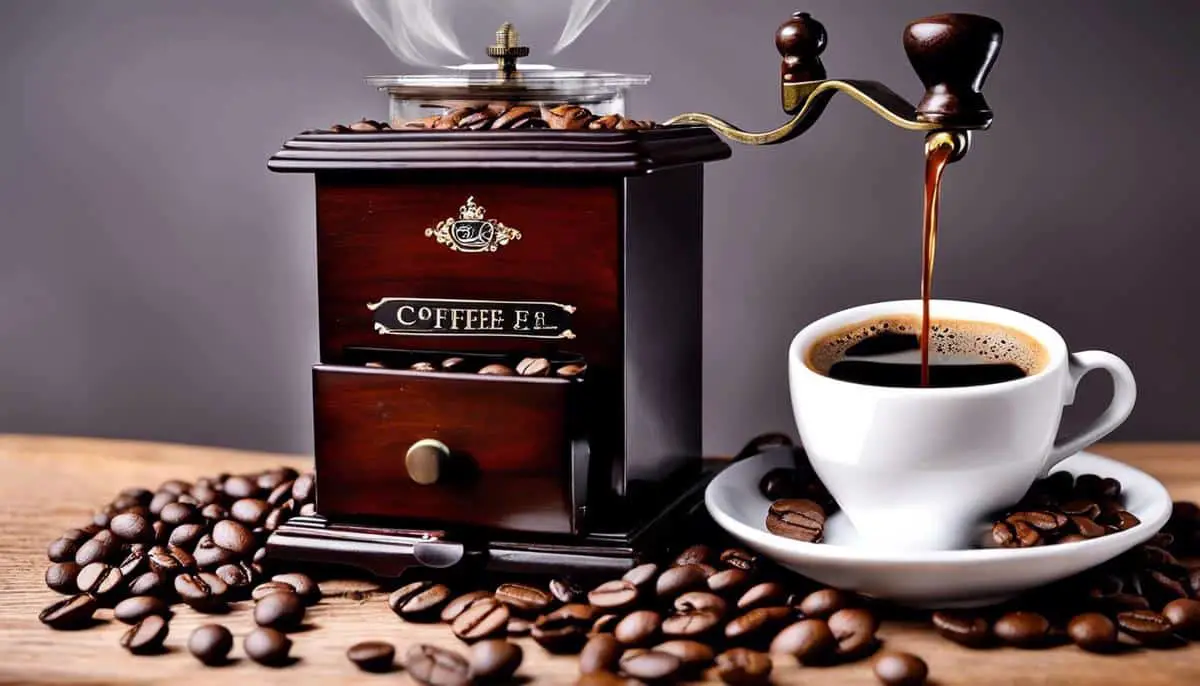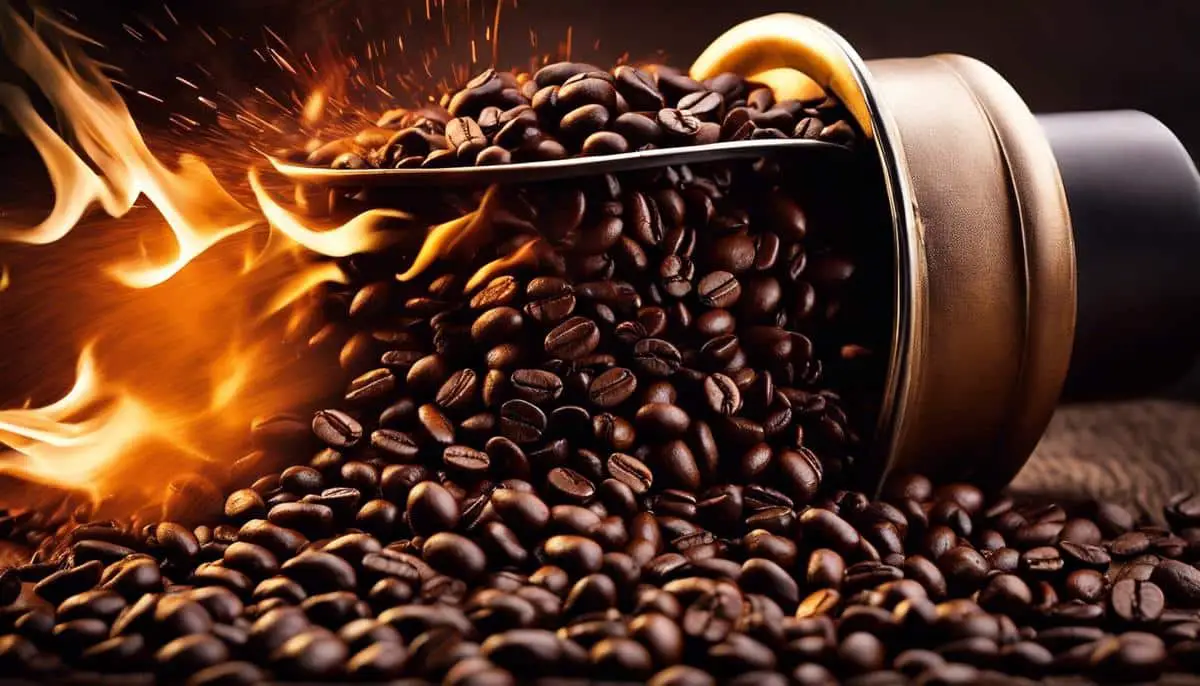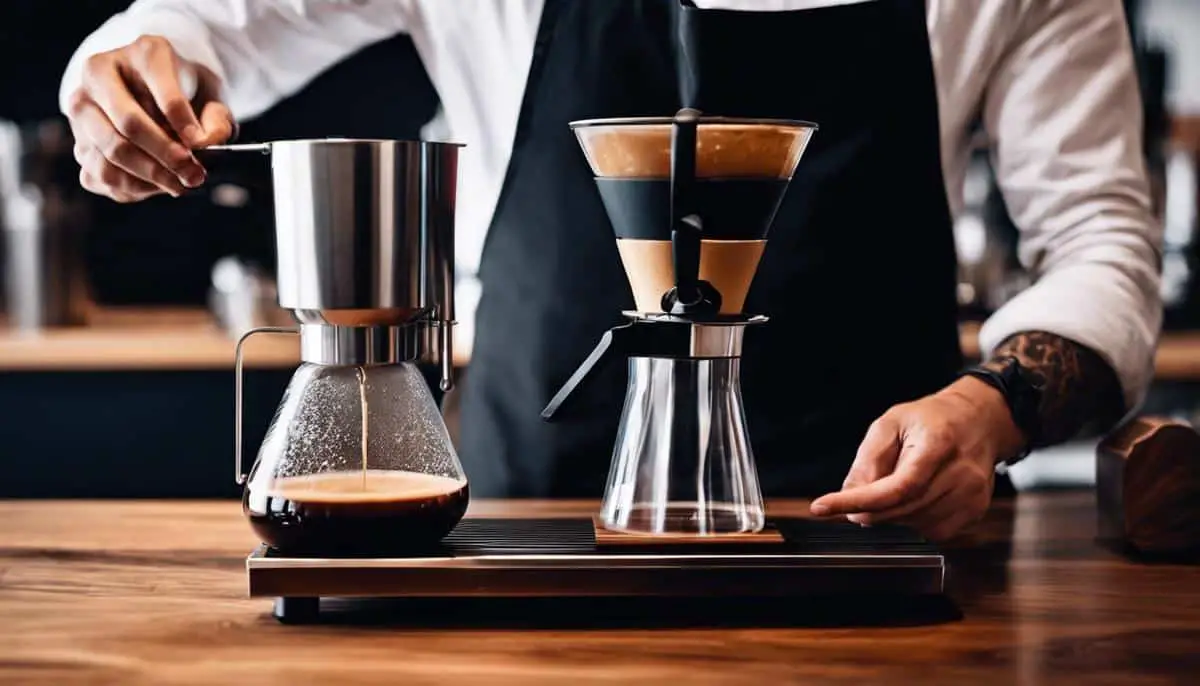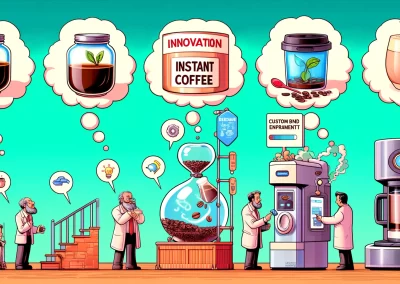Artisanal coffee, a term that has become ubiquitous in today’s culture, is far more than just a bold and flavorful morning pick-me-up. It’s a labor of love, a tale of passion and skill, steeped in history and borne out of an unflinching commitment to quality and tradition. A fresh roasted, exquisitely prepared cup of artisan coffee is an experience like no other, transporting the drinker on a journey from the historic origins of the coffee trade to the meticulous brewing techniques of modern baristas. This deep-dive into the world of artisanal coffee unravels its history, uncovers the craft behind the sip, savors the sensory pleasure it offers, and explores its vital role in our contemporary world.
History of Artisanal Coffee
Coffee is more than just a kickstart to the morning or a midday pick-me-up. It’s a craft. A liquid art that combines science and magic, with results that dance delightedly on the palate. And among the pantheon of coffee delicacies, artisanal coffee stands as a shining beacon to all who appreciate a brew done right. But, ever wonder how artisanal coffee ascended to its lofty heights, becoming a revered symbol of the craft?
Artisanal coffee (a term that rolls off the tongue as smoothly as the coffee it represents) isn’t a new phenomenon but truly began flourishing as it took center stage in the “Third Wave of Coffee” movement. Picture the coffee world as a bold, three act play. The first wave was coffee industrialization in the early 19th century. It made coffee economically accessible for everyone but sacrificed quality for quantity. In contrast, the second wave swept in around the late 1960s. It evolved from an increased demand for distinct flavors and high-quality beans driven by brands like Starbucks and Peet’s
Early 2000s
Then, in the early 2000s, the third wave of coffee rose, eschewing mass-market brands and focusing to a painstaking degree on the subtleties of preparing and enjoying coffee. This wave, still cresting high, is where artisanal coffee truly made a name for itself. The artisanal movement goes beyond what’s in the cup and delves into the essence of coffee: from the ethical and sustainable cultivation and harvesting of unique coffee varietals, to the precision of roasting, brewing, and presentation.
Factors such as where the coffee beans are grown, and the love and care with which they are roasted, ground, brewed, and served, hold paramount importance in the artisanal coffee narrative. The bountiful regions of Africa, Central and South America, and Asia, each offer distinctive coffee bean characteristics, attuned to the local climatic conditions and farming techniques. The journey from soil to cup is a process steeped in meticulous craftmanship.
Attention to Detail
As consumers, it’s easy to imagine how this increased attention to detail has caused an upswing in appreciation for artisanal coffee. The distinct flavors, the narrative behind the brew, the artistry in a latte’s foam design — each aspect creating an immersive, sensory coffee drinking environment. It’s not just about savoring an excellent cup of coffee anymore; it’s about experiencing the richness of its story.
The rise of artisanal coffee echoes a broader societal shift towards appreciating and consuming artisanal items. It signifies seeking quality, exploring variety, and becoming a part of an item’s journey. While technological advancements tackle convenience and mass production, the resurge of artisanal craft offers intimate, one-of-a-kind experiences.
Artisanal coffee is not just about tasting, it’s about knowing, appreciating, and reveering the craft and the journey behind every cup. It’s a stand against mass production, a nostalgic nod to traditional techniques, and a celebration of the artisans who put their heart and soul into every roast. It’s about filling every morning or coffee break with a small, special moment of luxury and indulgence. Truly, to sip a cup of artisanal coffee is to embrace an art form crafted over centuries, refined for your taste buds, wrapped in the warmth of an age-old tradition.

Techniques and Equipments used in Artisanal Coffee Craft
The Evolution of Artisanal Coffee: Techniques and Equipment Unveiled
From crop to cup, artisanal coffee celebrates the complexity and craftsmanship that elevates your daily cup of joe into a luxury experience. Let’s dive into the innovative techniques and specialized equipment that have catapulted artisanal coffee to the forefront of beverage trends.
The Secret of Slow Brewing
By slowing the brewing process, producers can enhance the extraction of flavor and aroma compounds from coffee grounds. From French press to cold brew methods, these slower brewing techniques enable coffee connoisseurs to appreciate the multiplicity of flavors and intricate layers in artisanal coffee. Slow brewing also allows for a smoother, less acidic cup, an aspect greatly appreciated by true coffee lovers.
The Power of Precision with Specialty Grinders
Artisanal coffee champions precision over convenience, and this is perfectly embodied in the use of specialty coffee grinders. Burr grinders — as opposed to traditional blade grinders — offer consistency, control, and precision. Such grinders allow craft coffee lovers to reach the ideal grind size, leading to optimal extraction and delivering a full-bodied flavor in every cup.
The Artistry of Manual Espresso Machines
The rise of artisanal coffee has seen a resurgence in the use of manual espresso machines, a tool that spotlights the skill of a seasoned barista. These machines, reliant on human touch rather than automated systems, allow baristas to control crucial aspects of the brewing process: water temperature, pressure, and extraction time. This mastery blends science and artistry, producing a coffee that preserves its inherent unique flavor notes, a characteristic deeply prized in artisanal coffee.
The Specialty of Pour Over Methods
The pour-over method has become a signature of specialty coffee shops, known for its ability to highlight subtle flavor nuances in coffee beans. Through careful control of the water flow, temperature, and brew time, the pour-over method extracts and accentuates complexities in the coffee, resulting in a clean and vibrant brew.
The Resurgence of Artisanal Roasting
Artisanal coffee enthusiasts are rediscovering the charm of small-scale, artisanal roasting. Reflecting the third wave coffee movement’s focus on transparency and quality, many artisanal coffee shops are investing in small batch roasters. These allow them to control every aspect of the roasting process and bring out the unique flavor profiles of the beans.
The use of sophisticated equipment and techniques reflects an enduring commitment to craftsmanship in the world of artisanal coffee. This dedication to quality places the power back in the hands of skilled artisans and farmers, celebrating the hard work and precision that goes into producing each coffee bean. With this knowledge of the practices and tools involved in the creation of artisanal coffee, one can deeply appreciate each satisfying sip. Meandering through the landscapes of flavor in artisanal coffee is an ever-evolving journey, rich with learning and full of delightful surprises.

Experiencing Artisanal Coffee
Every sip of artisanal coffee tells a unique story. This story unfolds through the meticulous process and attention to detail given to every part of its making. If one understands this complex world of handcrafted coffee, the tasting experience truly becomes unparalleled.
Moving forward, parallel to the fixation on the origin of the beans, one cannot forget the importance of the different brewing methods. Each brewing style enhances certain elements of taste and aroma, making it another exciting adventure in artisanal coffee consumption. Techniques like slow brewing methodically extracts the diverse flavors from the beans, highlighting every delicate note to deliver a symphony of taste to your palate.
On the other hand, coffee grinders also play a crucial role in refining the coffee drinking experience. Using specialty grinders gives one full control of the coffee’s grind size, leading to a more precise and exact extraction process. This in turn affects the body and flavor profile of the beans, turning them from ordinary to extraordinary.
Coming to the crown jewel of artisanal coffee making – manual espresso machines. Their charm and magic lies in their ability to give complete control to the barista. The pressure, the grind, and water temperature, everything lies in the hands of the coffee artist pulling the shot, leading to an espresso that truly reflects their skill and passion.
Pour Over Method
Pour-over methods are no less heroic in the world of artisanal coffee making. They bring out the subtlest nuances in coffee which can be every bit as complex as those in a fine wine. Much like wine-tasting, pour-over coffee drinking involves careful attention to tasting notes and nuances in color, body, and directed flow.
However, the key to the divine taste of artisanal coffee resides in artisanal roasting. This is where beans are transformed, and their true flavors unveiled. Every single type of bean requires a unique approach to the roasting process. This attention to roasting reveals dramatic flavor differences, adding another layer to the sensory delight of the final product.
Delving into the realm of artisanal coffee, every bean, every grind, every brew, and every sip interweaves to form an intricate tapestry of flavors and aromas. It’s not just the drink alone that offers pleasure, but rather the journey that each cup of artisanal coffee offers – a journey of exploration into a world of details and nuances that mainstream coffee could never dream of revealing. Get ready for an experience that will awaken your taste buds and elevate your appreciation for the art that is artisanal coffee. Enjoy the ride!

Artisanal Coffee in the Modern World
Artisanal coffee takes on an entirely new life when the subtleties of the beans’ origins are properly appreciated.
A coffee bean’s place of origin plays a crucial role in shaping its distinct flavor profiles. Each terrain, climate, and altitude can bring forth a unique mixture of acidity, sweetness, and a rich body of flavor that distinguishes one bean from another. With artisanal coffee, these details are embraced, not suppressed, making each sip a journey across the globe.
Equally essential to the artisanal coffee experience is the meticulous execution of brewing methods.
The various brewing techniques—French press, AeroPress, cold brew—each come with their unique impact on the final taste, aroma, and body. French press, for example, allows for a fuller-bodied brew compared to the smooth, less acidic results of a cold brew. Thus, each brewing style is no longer just a means to an end, but a crucial aspect of the coffee experience, deeply influencing the drink’s essence.
Next, consider the role of coffee grinders in artisanal coffee culture.
Consistency is king, as they say, and the grind size can dramatically affect extraction and, consequentially, taste. Specialty grinders, with their adjustable settings, help coffee lovers attain that perfect blend for each brewing style. From the coarse grind desired for French press to the fine grind needed for espresso, precision in grinding is another testament to the love of detail inherent in artisanal coffee.
Taking a deeper look into the artisanal coffee experience, manual espresso machines have revolutionized the traditional coffee brewing process.
These machines give control to the barista, allowing them to apply pressure manually to pull the perfect shot. By mastering the machine, a barista crafts every cup with precision and care, making each sip a part of a carefully curated experience.
<pour-over methods, too, have gained notoriety in the coffee world for the clean cup they serve. Through this process, the fullest potential of coffee beans is exploited as the slow and defined pour brings out the subtle nuances. With each stir and pour, the coffee transforms, revealing layers of flavor and aroma that might go on missed with other brewing styles.
Artisanal roasting further underlines the distinctiveness of specialty coffee.
Unlike commercial roasting practices which often seek a uniform roast profile, artisanal roasters tailor their roasts to each batch of beans, bringing out their truest flavors. This transformation, backed by empirical knowledge and calculated intuition, unveils the beans’ best attributes and contributes to an exquisitely personal coffee experience.
Artisanal coffee brings an intricate array of flavors and aromas to the palate. From the fruity, floral notes of a light roast to the spicy, chocolatey undertones of a dark roast, the brew’s tapestry of flavors is a testament to the bean’s journey from cultivation to cup.
In conclusion, artisanal coffee is more than just a brew—it’s an exploration into the world of details and nuances. Every cup is a testament to its origin, the precision of preparation, and the passion poured into it, making the enjoyment of artisanal coffee as much a journey as a sipped delight.

As the world keeps turning, the role and relevance of artisanal coffee in our lives and society continue to evolve. It has moved from being a simple beverage to a symbol of lifestyle, a statement of taste, a celebration of sustainable practices, and a testament to the unforgettable experiences it offers. The symphony of flavors and aroma in every cup speaks volumes about the painstaking efforts invested in sourcing, roasting, grinding, and brewing those precious beans to perfection. The journey of artisanal coffee serves as a testament to human ingenuity, artistry, and resilience in our relentless pursuit of enriching life’s experiences. Over centuries and across continents, artisanal coffee continues to unfold its narrative, one delicious sip at a time.









